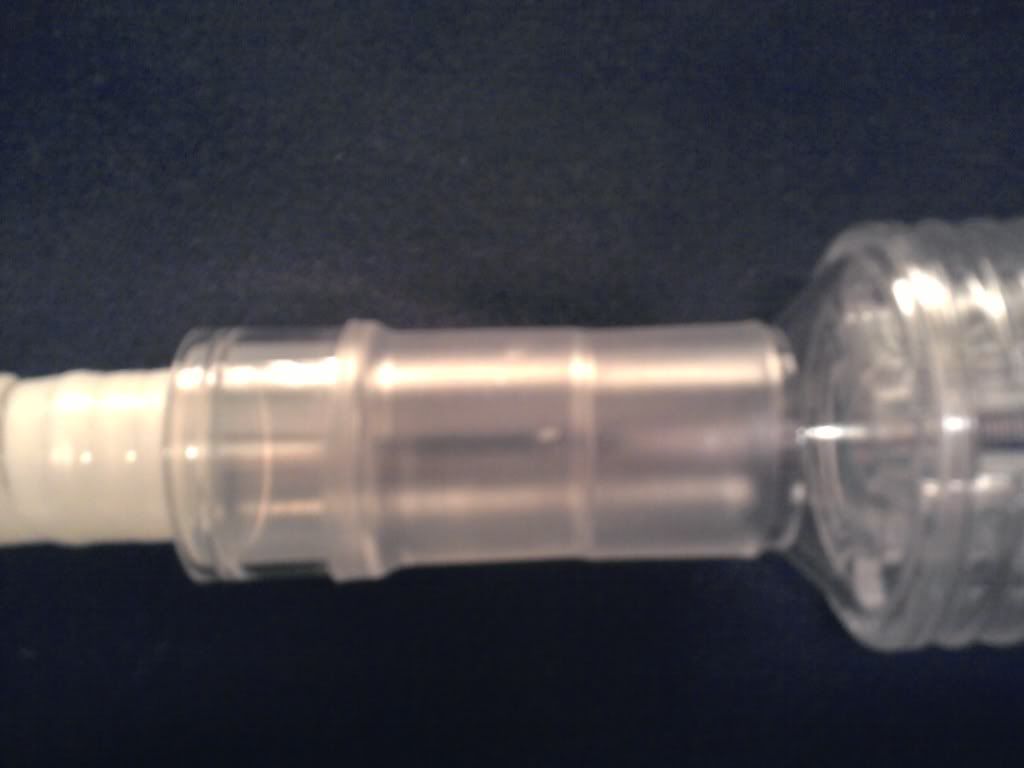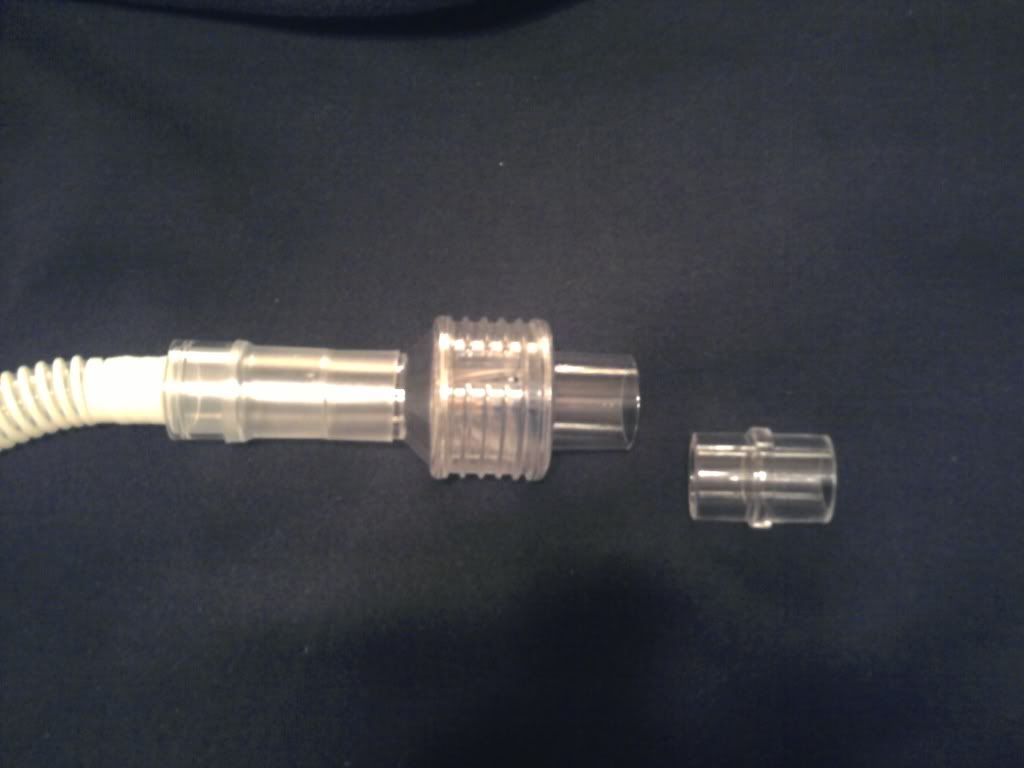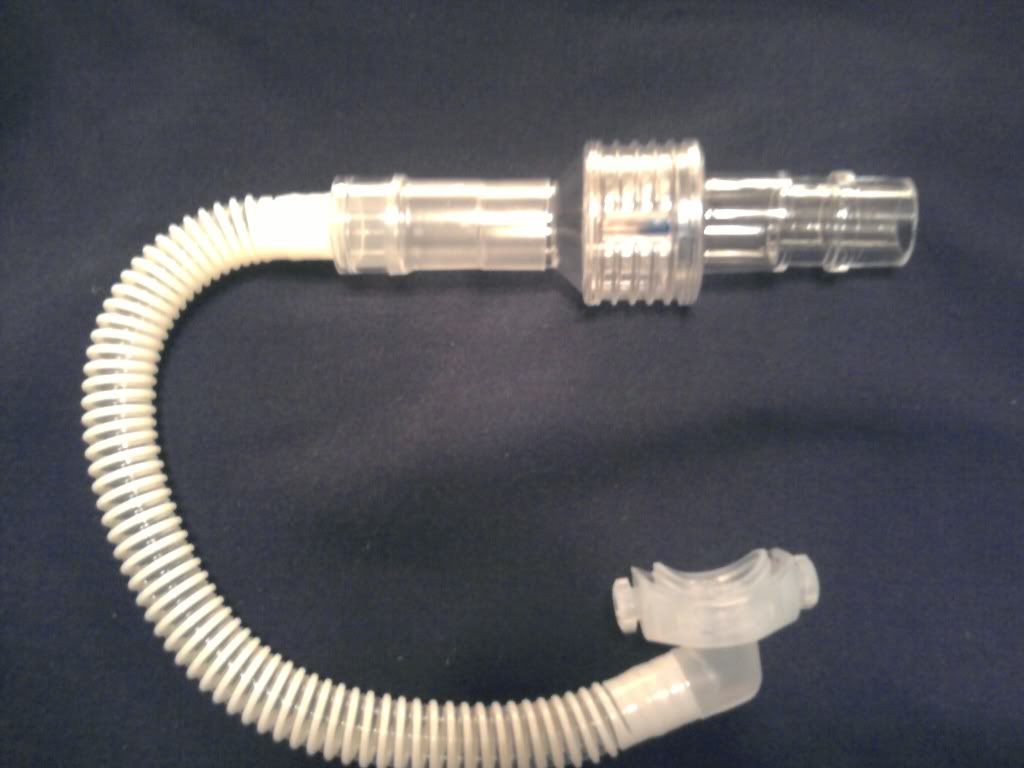Well, as you can guess by the title, I am one of those “dare-devil” mouth tapers.
In the past year, I have done much reading on this site and learned a lot. Yes, I paid attention to Arch when he warned of the dangers of taping. I believe the dangers of asphyxiation and aspiration pneumonia are real.
I am one of those patients who tried the FFM (Mirage Quattro) and the Innomed Hybrid, both with and without a chin strap. None of those combinations worked for me. I lost a lot of sleep in six months of frustration with leaks and painfully dry mouth. Basically, it boiled down to whether I want to have cpap treatment, or not. Right now, I’ve chosen to tape. It is a personal decision, and one that I carefully made.
I really like this quote from an old post by Babette:
At this point in my treatment, my main worry is the rebreathing of exhaled air in the event of power or machine failure. I’ve ordered a 120 db power failure alarm which should give my wife a heart attack when it sounds. I may have over-bought since a smoke detector's sound is ~85 db @ 3 meters. It will not be mounted by my bed. edit: I over-bought. The sound is painful.Babette wrote:CAVEAT - If you are elderly, infirm, bedridden, under the age of 18, cannot hold a day job, do not mow your own lawn, have had your driver's license taken away, or have numerous DUI's on your record - DO NOT TAPE YOUR MOUTH SHUT. You're probably not a good candidate for saving yourself from asphyxiating on your own vomit.
I’ve now taken care of waking up due to a power failure. But I am still worried about rebreathing following a machine failure? I might not wake up. Yes, I know the room gets quiet. Did I mention that I've lost a lot of hearing? I don't sleep with my hearing aids. I also know that breathing is harder while attached to a machine. But I don't want to risk not waking up.
With no positive air pressure and a 6 foot hose, rebreathing is a real possibility. Let us look at the volumes involved. I get a little oxygen exchange through the pillow vent holes, but most of my exhaled air goes into the 6 foot hose and the hose on my Swift NT. I measured the volume of the 6 foot hose as ~460ml and the volume of the Swift NT hose as ~80ml for a total of 540ml in the hose chain. Sleepyhead indicates that my tidal volume (i.e., the volume of air inhaled and exhaled at each breath) is about 500ml. Clearly when positive pressure is lost I won’t get any fresh air from the hose chain. I need to reduce the total volume (length of tubing).
[BTW, the CPAPTalk forum is great. There is a lot of useful info in the archives.]
In a long and very heated thread about taping that started last October viewtopic.php?f=1&t=70303&st=0&sk=t&sd= ... 75#p653909, I found this very readable paper: Potential Rebreathing After Continuous Positive Airway Pressure Failure During Sleep
http://chestjournal.chestpubs.org/conte ... 1/196.full.
This paper provided a simple method for reducing the amount of rebreathing:
"Conclusions: Common CPAP systems run a risk of inducing rebreathing in case of failure. This risk could be easily avoided by including a passive valve in the apparatus."
Moresleep's post @ (viewtopic.php?f=1&t=70303&st=0&sk=t&sd= ... 75#p653909)
started a discussion about the Respironics pressure valve: https://www.cpap.com/productpage/respir ... chine.html “This valve is a spring-loaded valve that helps prevent the backflow of oxygen or water from the patient circuit in to the CPAP machine when the CPAP machine is turned off [or failed]. Any backflow passes out of the circuit through the vents. When the CPAP machine is operating, the valve allows air to flow through the patient circuit. The vents are sealed to prevent flow out of the circuit. The minimum operating pressure is 2 cm H2O.”
I don't use oxygen or experience rainout, but I thought the Respironics pressure valve could serve as a workable anti-asphyxiation valve. I bought one and found that I could breathe through it with no problems. There was no sensation of trying to breathe through a straw.
To minimize rebreathing, the valve needs to be as close to the mask as possible, i.e., with the least amount of tubing between the mask and the valve. It is not perfect, but in my design I chose to attach the pressure valve directly to the Swift LT hose.
I made the connection using clear 1” heat shrink tubing, a “polyolefin heat shrink tubing”. The shrink tubing that I used has a 2:1 shrink ratio. I bought it at a local computer / ham radio hobbyist shop. Fry’s might carry it, as well as Radio Shack. I paid $3.10 for a four foot length. I cut a 2" piece of shrink tubing to cover the 22mm male connectors on both the pressure valve and Swift LT hose. I used a hair dryer laying on a flat surface to blow hot air for about five minutes. It took a long time, maybe longer than five. You want the tubing to tightly shrink around the surfaces.
Note that this is not a permanent connection. Just a little cut with a razor and the shrink tubing comes off. Here is an out-of-focus photo of that connection:
Figure A: Closeup of joint between mask hose (left) and pressure valve (right)

The inlet side of the pressure valve is a 22 mm female connector. I was attaching a 6 foot hose to the inlet side, so I bought a universal hose connector (male-to-male adapter) https://www.cpap.com/productpage/univer ... ector.html.
Figure B: Closeup of Components (with mask hose and PV already joined)

My tubing volume from the mask to outside air via the pressure valve is reduced from ~540ml to ~80ml by this setup. As I said, it is not perfect, but it does greatly reduce the amount of rebreathing if I lose machine pressure. It does add weight to my mask, however, my normal mask configuration is with the hose attached to the top of the harness.http://c0009431.cdn.cloudfiles.rackspac ... -front.jpg
Here is a photo of the final setup:
Figure C: Completed Unit

I've slept with this setup for about a week and have seen no change in my leak rate. My AHI is about the same, <2. The extra weight has not been a problem. I was worried that it would move the pillow while sleeping. Right now, I am trying to cut down an old six foot hose to connect between the mask hose and pressure valve. Of course, the problem is inserting the shorter hose into the rubber connector. I know I can buy an 18 inch hose, but that would add about 110ml of volume. (Yes, I did buy one and just measured it.)
Since I had the distilled water jug and a 1000ml beaker handy, I measured the dead space in my Mirage Quattro. I measured 140ml, minus my nose. My nose is not a 60ml nose. I concluded that my setup with the Responics pressure valve attached on the end of the Swift LT hose is the same as my Quattro with the anti-asphyxiation valve attached at the elbow. So in the event of a power or machine failure, I think I will suffocate at the same rate with either mask.
So there you have it. I am happy with it. I hope someone else finds it useful.
I would like to eliminate the taping and will continue to try different things. In the last month, I tried sleeping with no tape to see if I had "trained my lips and tongue" to stay put. Ha! Wishful thinking.
Earl










